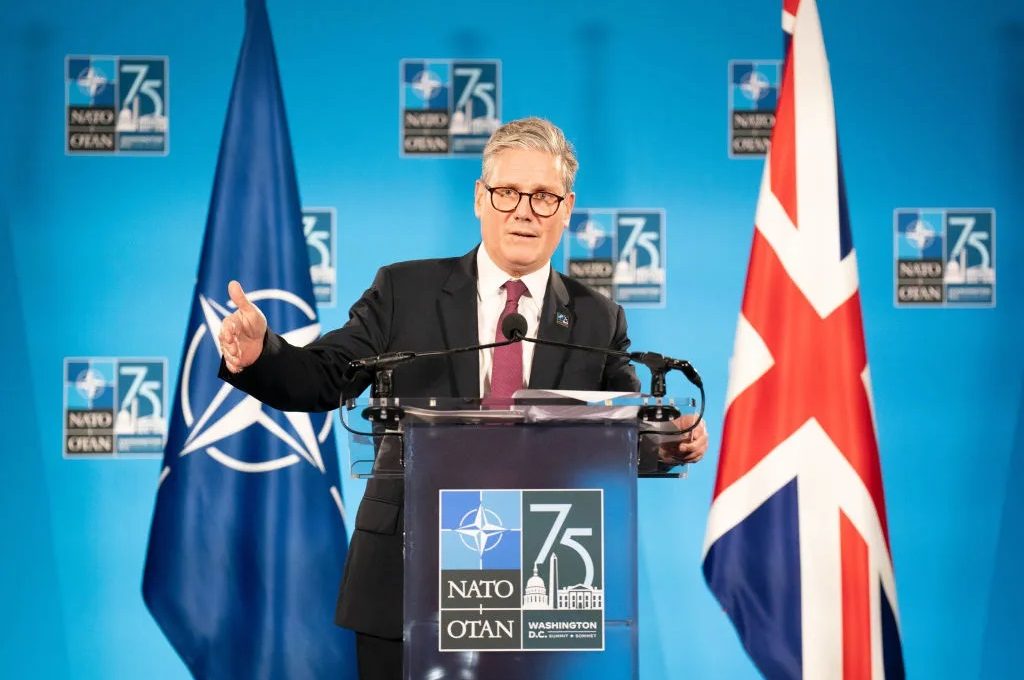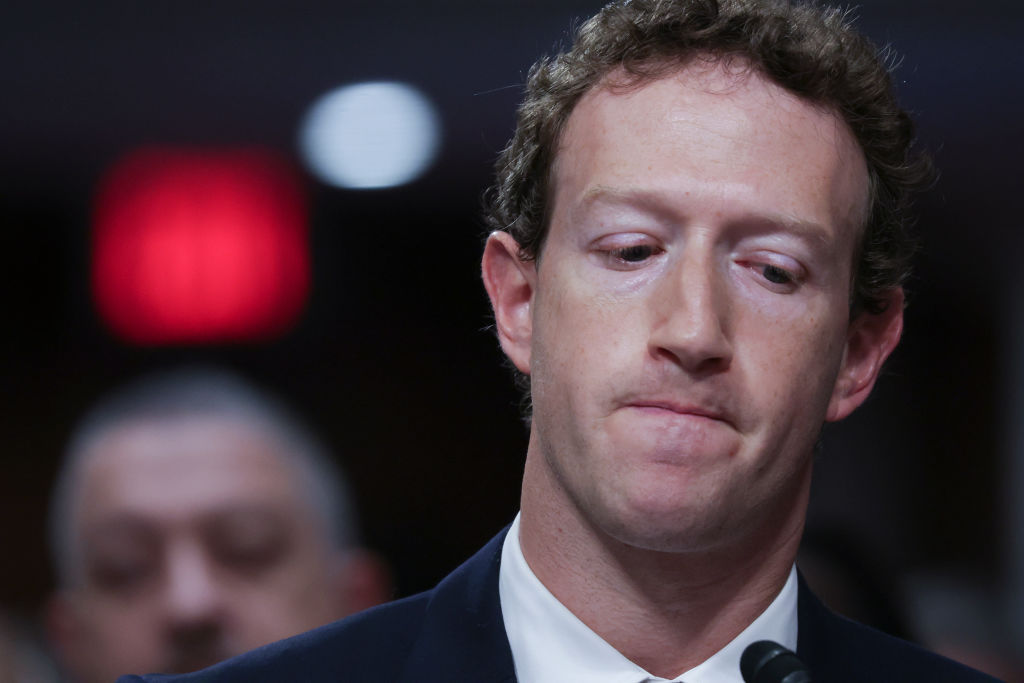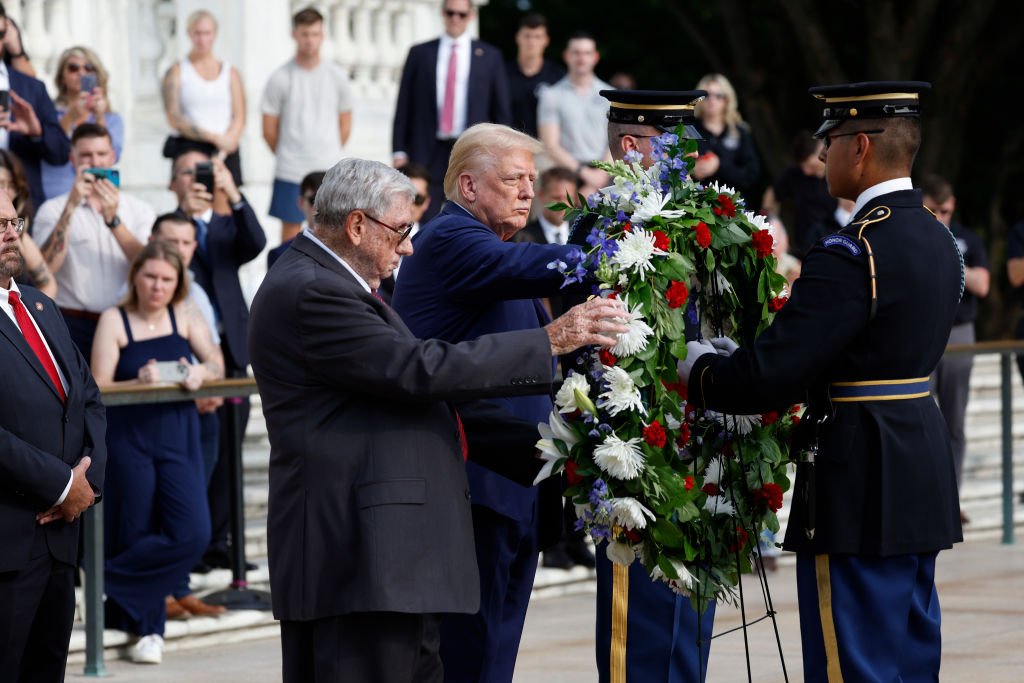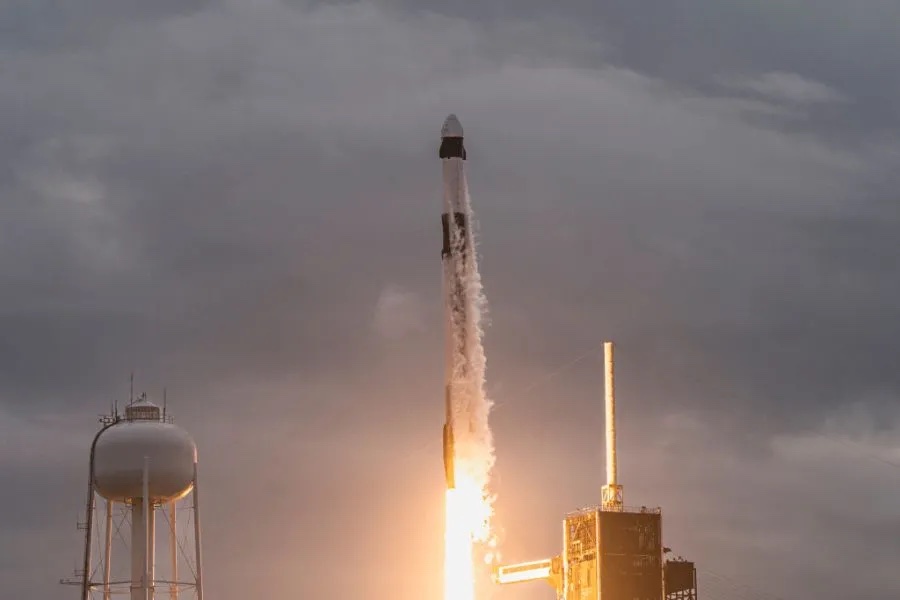On his flight back to London from Washington, DC, Keir Starmer will have been satisfied with the outcomes of his first NATO summit. The new British PM will be concerned about the vigor of President Biden and the rhetoric of his presidential challenger. He and his European colleagues can do more to help assure the future of the transatlantic alliance.
The summit in Washington marked the seventy-fifth anniversary of the most durable and successful defensive alliance in history. The decade since Russia’s illegal annexation of Crimea has seen remarkable transformation in NATO, including the agreement of a new Strategic Concept at Madrid in 2022, which reaffirmed the purpose of the alliance, and the implementation of revised defense plans at Vilnius last year, which detailed exactly how NATO forces would respond to a Russian attack.
Biden’s Atlanticism is out of sync with mainstream political thought in Washington
In Washington, NATO retained its commendable focus on Russia and built on these achievements. It confirmed there are now 300,000 troops at high readiness to deter and defend Europe against any Russian military aggression, even if this remains unlikely at present. Leaders agreed to accelerate defense production, ramp up military training and cyber defenses, and enhance air defenses. In the wake of extensive Russian use of missiles against Ukraine, not least last week’s shocking strike on a children’s hospital in the center of Kyiv, a US and German bilateral agreement to station new long-range missiles in Germany to bolster conventional deterrence will not have gone unnoticed in the Kremlin. NATO also called out Russia’s partners, in particular its “decisive enabler” China, for supporting Putin’s wicked war in Ukraine.
Despite Putin’s ongoing efforts to divide the alliance, and dissuade it from continuing to support Ukraine, members in Washington decided to send more weapons and air defenses to Kyiv, and pledged long-term security assistance. This pledge included a further $45 billion of political, economic, military, financial and humanitarian support over the next year. Allies will contribute in proportion to their GDP. A NATO organization will now coordinate provision of military equipment and training to Ukraine.
These are all welcome, vital, if overdue steps. But the summit also missed some important opportunities. First, Ukrainian membership of the alliance was again fudged. Although the summit communique promised that “Ukraine’s future is in NATO,” there remains no clear political pathway to achieve this. While leaders agreed that Ukraine’s “independence, sovereignty, and territorial integrity within its internationally-recognized borders directly contributes to Euro-Atlantic security,” they continue to haver on starting the membership process. In the meantime, Ukraine remains without security guarantees, despite twenty countries signing bilateral security agreements with it, and the US continues to place restrictions on Ukraine’s ability to defend itself against relentless Russian air attacks. Ukrainians seeking sanctuary in their bomb shelters again this weekend will gain little comfort that NATO has solemnly declared Ukraine’s membership as “irreversible.”
Secondly, the outgoing secretary general’s attempts to secure multi-year financial settlement for Ukrainian support were unsuccessful. Instead, allied contributions will be assessed annually, starting at the next summit in the Netherlands next year. This reduces Ukraine’s ability to plan and equip itself, and leaves it vulnerable to the whims of nations, as seen in the six-month US congressional delay in military support earlier this year. In any event, as the president of Romania noted wryly, some NATO allies have provided Ukraine with only about half of the promised aid.
Third, although the summit congratulated itself that “two-thirds of allies have fulfilled their commitment of at least 2 percent of GDP annual defense spending,” this leaves one-third that still haven’t. The Canadian prime minister laughably declared that his country will meet the 2 percent target by 2032, twenty-six years after it was first established and ten years after he first promised to do so. With leaders agreeing that expenditure will be needed to meet new defense promises and plug existing gaps, the existing low 2 percent bar should have been raised to 2.5 percent at this summit.
Finally, as Rusi, the think tank, noted before the summit: “NATO’s transformation… has been reactive to Russian aggression, rather than proactive.” The communique of the previous Vilnius summit promised only to “respond to Russian threats and hostile actions in a united and responsible way.” (My italics.) Agreement of a new strategic approach to Russia, similar to the 1984 Washington Statement on East-West relations published when the alliance turned thirty-five, is well overdue. Amid disagreement, the Washington summit pushed work on a new strategy off till another year. Without political agreement on the way ahead, the Kremlin will continue to set the pace of Euro-Atlantic security. Coming as news broke of a foiled Russian assassination plot against a German defense industrialist, there was little concrete action to deal with Russian unconventional activities, although in a welcome change NATO’s adversaries were reminded that these could trigger the key Article 5 (collective defense) of the NATO treaty.
Yet, sober analysis of the Washington summit’s positives and shortcomings was overshadowed by feverish discussion on whether Biden is mentally fit to stand for re-election. The return of Donald Trump is no longer unimaginable. Although the summit took steps to try to mollify Trump by spelling out European budget contributions, burden-sharing arrangements for Ukraine, and appointing a new secretary general with solid personal relations with the former president, Trump’s campaign rhetoric has made clear that he still sees NATO as a financial burden on the US rather than a net positive for US national security.
In 1948, Labour foreign secretary Ernest Bevin set out his vision for a new transatlantic alliance to protect against the Russian threat and bind the US to the defense of Europe. It has been assumed ever since that the United States will always ensure that Europe remains whole and free. The rise of China, a steady US drift away from Europe over the last thirty years, and Americans questioning why 750 million Europeans rely so heavily on a country of 330 million for their protection all challenge this assumption. Trump exemplifies this drift but is not its progenitor; President Obama also spoke of freeloaders and led the US pivot to Asia. Biden’s Atlanticism is out of sync with mainstream political thought in Washington.
Although Trump is unlikely to leave NATO, those around him have been sketching out a “radical reorientation” in which Washington takes a back seat to Europe — and cuts a deal with Putin over Ukraine, severely weakening European security. At this time of potential turbulence, European leaders must “stop moaning and whining and nagging about Trump” as the new Secretary General Mark Rutte put it in February, and get cracking. First, all should ensure national defense spending meets at least 2 percent of GDP to meet their NATO obligation. Sweden has shown what is possible when there is political will, moving from 1.3 per cent to 2 percent in two years. Work to strengthen the European pillar of NATO should also be defined and accelerated. This was encouraged at Washington but words must be turned into action. Labour’s proposed but still vague UK-EU defense and security pact can be a crucial part of this.
Lastly, in the face of the Russian threat and possible return of Trump, Starmer should show the same strategic grip as Bevin and set out a clear timeline for the UK spending 2.5 percent of Britain’s GDP on defense now, and not meekly hide behind the bureaucratic process of his Strategic Defence Review, which will come at some stage next year. This increase in defense spending will demonstrate UK leadership within Europe, encourage European laggards to display similar political solidarity, and address US rancor about freeloaders. It remains to be seen whether Starmer has the political courage to take up this opportunity.
This article was originally published on The Spectator’s UK website.


























Leave a Reply